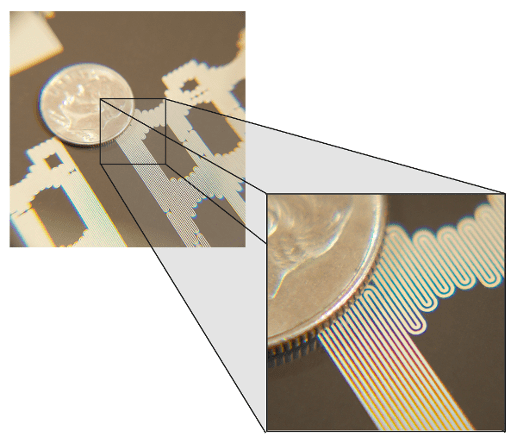When referring to circuits, resistance is a common word that you will come across. What is it and why does it matter? Xymox Lab Supervisor, Jerry King, answered these questions (and more)!
Resistance is an electrical measurement which helps you determine how easily current can flow through a circuit; for this post we are referring to screen printed circuits (aka printed trace). It’s easiest to envision resistance as how difficult it is for current to flow, after all, it is called “resistance”.
 Why would companies want/need a higher or lower resistance for the membrane switch?
Why would companies want/need a higher or lower resistance for the membrane switch?
Requirements & specifications are usually dependent upon what the end electronics are capable of sensing. Example: if you close a typical switch, the measured resistance would probably be less then 100 ohm. Electronics are monitoring the traces of the membrane switch looking for resistance values. If a resistance is found between two traces the electronics may then send a signal to turn on an LED. The electronics in the device can be “tuned” to recognize a certain resistance value limit. Typically, most end applications can sense several hundred ohms or more. This is important, to HMI suppliers, from an electrical testing standpoint. When the test programs are set up, the resistance maximum limit must be programed for each key location on the part. If a threshold that is lower than a customers true requirements is used, it could result in scrapping perfectly good products.
What can effect the resistance value of a printed trace?
Width an length have a definite impact.
Narrow traces = higher resistance
Longer traces = higher resistance
Think of it like a river, it is more difficult for the water to flow through a long, narrow river than it is through a short and wide river.

This has really come in to play over the last few years; interfaces are becoming smaller but customers want the same features. To attain this, the traces have to be narrow, simply because there isn’t much “real estate” to place the traces on.
The chemistry of the ink itself will dictate the resistance value. Highly conductive material would create a lower resistance ink. Silver is a very good conductor; that is the foundation of the conductive ink that Xymox makes in-house. Carbon, for instance, does have conductive properties but is a poor conductor, it would have a significantly higher resistance value.
What adjustments could be made to the ink which would create a different resistance value?
If you alter the ratio of silver flake to the resin (resin is base mixture which holds the silver flake together and makes the ink adhere to the substrate) the resistance will change.
More silver flake = lower resistance
Less silver flake = higher resistance.
There are limits to this adjustment; if the percentage of silver flake gets too low, the flake won’t be able to properly overlap to create electrical contact. In this case the switch wouldn’t work. If the percentage of silver flake get too high, there isn’t enough resin to hold everything together and make it adhere to the substrate. Other inks could be combined with the silver ink to increase the resistance. Carbon ink, for example, could be added, which would increase resistance.
Typically resistors are mounted on their circuit boards, but, *shameless plug* Xymox also can print a “resistor” on a switch. In this case the resistor is used to limit the amount of current going to an LED (this is critical as an LED can be damaged if overdriven with current). Resistor inks typically have a much higher value of resistance than a silver ink could attain. Most are a carbon ink, which can be adjusted with the addition of an insulative ink.
Resistance is an important factor in electronic circuits, higher resistance makes the current flow more difficult, lower resistance makes the current flow less difficult. What are your resistance specifications?
